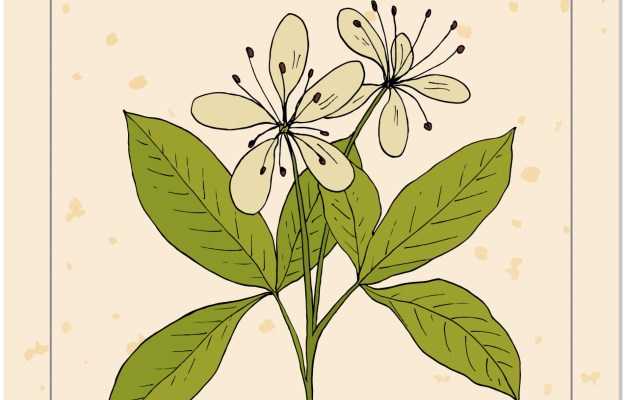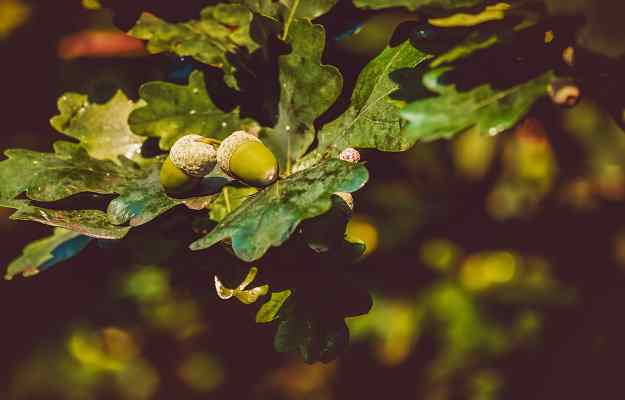Those who follow the tenets of Indian traditional medicine systems in their daily lives may be familiar with the name varuna. The varuna plant (Crataeva nurvala) is credited with a number of health benefits, from treating kidney stones to urinary tract infections, in the Unani, Ayurveda and Siddha systems.
New research into these purported benefits of varuna medicinal plant has begun, though it is early days in terms of verifying all the health benefits attributed to varuna. Here's what you need to know about this flowering plant that grows all over India:
Basic information on varuna:
- Scientific name: Crataeva nurvala (synonym C. magna)
- Sanskrit name: Setuvruksha, Rodha vruksha, Sadhu vruksha, Varana, vasana, Kumaraka, Tamalaka, Barhapushpa, Ajapa, Setu, Setuka
- Common name: Barna, barun, bila, bilasi, biliana, Lengam tree, three-leaved caper, sacred lingam tree, triune leaf tree
- Family: Capparidaceae/Capparaceae or caper family
- Native region and geographical distribution: Found in Myanmar; South Asia and Indo-Malaysian region
- Parts used: Root bark, stem bark, flower, leaves
- Properties: The plant has an astringent (kashaya) and bitter (tikta) taste. It is light to digest (laghu) and is dry (rooksha). It has a pungent taste after digestion (vipaka). It has a hot potency (veerya) and balances Vata dosha (marutapha).
The medium-sized tree can be found in almost all parts of India, including Gujarat, Bihar, Odisha, Madhya Pradesh and Tamil Nadu. It usually grows along the banks of rivers and streams and is often covered with bunches of beautiful greenish-white or light-yellowish flowers.
The fruits of this tree are ovoid-shaped berries. They resemble lemons but change to red on ripening.
Read on to know about the uses of varuna in health care:
-
Health benefits of varuna
- Varuna for loss of appetite
- Varuna for arthritis and joint pain
- Varuna for blood sugar regulation
- Varuna for better metabolism
- Varuna for diarrhoea
- Varuna for bleeding disorders
- Varuna for wound healing
- Varuna for constipation
- Varuna for abscess and pus-filled abscess
- Varun for gout
- Anti-ageing properties of varuna for skin
- Varuna for urinary tract infections
- Varuna for urolithiasis
- Varuna for kidney stones and urinary stones
- Varuna precautions and side effects
- Varuna dosage and how to use varuna
Health benefits of varuna
In Sanskrit, varuna means something that is earnestly desired by people. Setuvrkasha means a tree that fetters diseases and marutapha means something which cures diseases that arise from the destabilisation of the humour vata.
According to Y.S. Prabhakar and D. Suresh Kumar, of the department of physiology and ethnobiology, International Institute of Ayurveda, Ramanathapuram, Coimbatore, varuna is a promising plan for the treatment of urinary stones.
Varuna is a diuretic which can also act as a blood purifier. It has laxative properties that can be helpful in constipation and to regulate bowel movement. The plant has anti-inflammatory properties which can be helpful in reducing joint pain and inflammation.
Varuna for loss of appetite
Making varuna a part of your daily diet can be helpful in improving your appetite. As per Ayurveda, loss of appetite occurs because of agnimandya or poor digestion: aggravation of pitta, kapha and vata doshas results in improper digestion of food, which results in the loss of appetite. Varuna medicinal plant can help in stimulating the digestion of food and improving appetite. Deepan or appetiser property of the plant is responsible for this.
You can simply add store-bought varuna powder and honey in your daily diet to avail this benefit. However, people with high blood pressure should use varuna plant only under medical supervision. The diuretic (increases urine production) activity of the plant is the reason for this.
Varuna for arthritis and joint pain
The anti-inflammatory properties of varuna medicinal plant can be helpful to patients with arthritis and rheumatoid arthritis. It can be helpful in reducing joint stiffness and joint pain.
Varuna for blood sugar regulation
The bark of the varuna plant may have anti-diabetic properties. It may help to reduce the extra secretion of insulin and blood sugar levels.
Varuna for better metabolism
Varuna plant helps in treating pitta dosha (metabolic disorders). It enables the liver to work properly and helps in restoring extra bilirubin levels. A healthy metabolism can facilitate proper digestion of food and also aid weight loss.
Are you also troubled by obesity and are not able to lose weight even after a lot of efforts, then start using myUpchar Ayurveda Medarodh Weight Control Tablet today and control your weight.
Varuna for diarrhoea
An ethanolic extract of varuna plant’s stem bark can help in reducing the severity and frequency of diarrhoea and intestinal transit produced by castor oil, a study showed.
Varuna for bleeding disorders
Varuna flower can be useful for the management of bleeding disorders like rectal bleeding, nasal bleeding and menorrhagia (heavy periods). Ayurveda suggests that all body processes are regulated by equilibrium among vata, pitta and kapha. Varuna plant has been found to be helpful in balancing vata (blood flow, waste elimination, breathing), pitta (fever and metabolic disorders) and kapha (joint lubrication, skin moisture, wound healing).
Varuna for wound healing
Varuna can help in quicker healing of wounds. Bark powder can be applied on the affected area of the skin, and it can help in reducing swelling and reviving the normal texture of the skin. Ropan or healing properties of varuna are responsible for this. Make a paste by adding 1.5 tsp of varuna bark powder in coconut oil, and apply on the affected area.
Varuna for constipation
The laxative properties of varuna plant can be helpful in offering relief from constipation. It helps in loosening stools and regularising bowel movement. Deepan (appetiser) and pachan (digestion) properties of varuna medicinal plant promote better digestion and prevent the formation of toxins in the body.
Varuna for abscess and pus-filled abscess
An abscess is a buildup of pus in the tissues of the body. It causes redness, pain and swelling. Ayurveda suggests that an abscess occurs because of an imbalance of the vata and pitta doshas, which results in inflammation and pus formation. The sothhar (anti-inflammatory), kashaya (astringent) properties and vata-balancing properties of varuna plant can help in the management of abscess. It can reduce inflammation and also prevent abscesses in future. You can apply varuna bark powder and coconut oil paste on the affected area.
Varun for gout
Varuna medicinal plant has anti-inflammatory properties that can be helpful in the management of gout. Ayurveda says that gout occurs because of the imbalance of vata dosh, which results in inflammation and swelling in the affected area. Varuna helps in balancing vata dosha and also reducing inflammation.
Anti-ageing properties of varuna for skin
Varuna medicinal plant has a snigdha or oily nature. It can help in reducing aggravated vata dosha, which results in dry skin, lack of moisture, wrinkles and other symptoms of premature ageing.
You can make a paste of varuna bark powder and coconut oil and apply on the affected area to control your wrinkles.
Due to its kashaya or astringent property, varuna can be helpful in purifying the blood and preventing skin conditions like acne or boils.
Varuna for urinary tract infections
The plant has been found to be effective in combating infections of the urinary tract (UTI). The anti-inflammatory and antimicrobial properties of the plant could be responsible for this. The plant can help in controlling the burning sensation (vaginal burning and penile burning sensation) caused by a UTI. It also helps in increasing urine flow. The traditional recommendation is to have 1.5 teaspoons of varuna powder with honey after meals, if you have a UTI.
Please note that this remedy is not a substitute for a doctor's visit. If you have itching or burning sensation in the genitalia while urinating, frequent urination, fever or other symptoms of a UTI, see a doctor on an urgent basis and only take herbal remedies if your doctor allows it.
Varuna for urolithiasis
Urolithiasis is a term used to describe stones that form the urinary tract. Clinical studies conducted at the Banaras Hindu University show that the varuna plant can be effective in the management of urolithiasis, chronic urinary infections, prostatic hypertrophy (benign growth in the prostate that may lead to urinary tract obstruction) and neurogenic bladder (loss of bladder control due to a problem with the nervous system or spine).
A decoction of the varuna bark, when administered to urolithiasis patients, helped in reducing the urinary excretion of calcium. It also altered proportions of urinary magnesium and sodium, which are also involved in the formation of urinary stones.
Varuna for kidney stones and urinary stones
The bark of varuna tree may help in the passage of urinary stones. In a study with 46 people with kidney stones, ureter stones and bladder stones, 26 were able to pass the stones within four months of treatment with a decoction of varuna bark. The reason: varuna is a known diuretic. It increases the production of urine in the body, thereby increasing the chances of passing the smaller stones naturally.
According to research published in the Journal of Herbs, Spices and Medicinal Plants in 2008, the root bark of varuna also contains "lupeol, a pentacyclic triterpene" which can reduce the chances of kidney stones by limiting the deposition of the minerals that cause them.
Varuna precautions and side effects
Varuna medicinal plant has diuretic properties. People who are already taking allopathic diuretics for high blood pressure treatment should consult their doctor before using the plant.
Seek medical advice before using the herbal remedy if you are trying to get pregnant or if you want to use it during pregnancy.
The plant may also interact with other medicines and supplements. Having said that,
- The extracts of the varuna medicinal plant have not been found to interact homoeopathic medicine. It is still recommended to check with your doctor first for any adverse effects or reaction.
- We all need nutritional supplements for our overall health and well-being. Multivitamin tablets and supplements of omega-3 fatty acids are commonly consumed supplements. Extracts of varuna medicinal plant go well with these supplements but if you are taking more than one supplement in a day, do check with your doctor for any potential side effects.
- People who are on regular allopathic medicines must consult their doctor to see if it is safe for them to take Ayurvedic remedies or not. Some Ayurvedic herbs can interact with modern medicine. Check with your doctor on the timing of these medicines in order to avoid any adverse reactions.
Varuna dosage and how to use varuna
A decoction of the bark can be taken in 12–50 ml dosage per day, depending on what the Ayurvedic or Siddha doctor prescribes for you. Half to one teaspoon of varuna bark powder can be taken in a day, as per your requirement.
Find Ayurvedic Doctor in cities
Doctors for Varuna benefits and side effects

Dr. Megha Sugandh
Ayurveda
6 Years of Experience

Dr. Nadeem
Ayurveda
3 Years of Experience

Dr.Ashok Pipaliya
Ayurveda
12 Years of Experience

Dr. Harshaprabha Katole
Ayurveda
7 Years of Experience
Medicines / Products that contain Varuna
- Myupchar Ayurveda Kanchnar Guggulu - ₹312
- Planet Ayurveda Mutra Krichantak Churna - ₹590
- Planet Ayurveda Rencure Formula Capsule - ₹1450
- Thyrosolve Capsule - ₹799
- Planet Ayurveda Varunadi Vati - ₹550
- Planet Ayurveda Varuna Powder - ₹500
- Kerala Ayurveda Varunadi Kwath - ₹120
- Maha Herbals Kanchnar Guggulu - ₹130
- Planet Ayurveda Prostate Support Tablet - ₹550
- Elzac Herbals Elbas Syrup - ₹118
- Goelar Urepro Syrup 200ml - ₹203
- Goelar Urepro Kit - ₹512
- Aimil Neeri Syrup 200 ml - ₹281
- Goelar Proscure Capsule - ₹320
- Meru Bio Herb Ayurveda Gao Mata Amrit For Renal Problem and Kidney Stone 450ml - ₹550
- Rencal Syrup - Natural Kidney protector 200ml - ₹160
- Jairishi Prostina Capsule - ₹671
- Krishnas Herbal & Ayurveda Kidney Relive Juice - ₹340
- Krishnas Herbal & Ayurveda Patharchatadi Juice (Stone Craker Juice) 500ml - ₹260
- Krishnas Herbal & Ayurveda Patharchatadi Juice (Stone Craker Juice) 1000ml - ₹510
- Urisolve Capsule - ₹719
- Namyaa Aarthava Kshaya Tablet For PCOD and PCOS - ₹449
- Aimil Neeri KFT Syrup - ₹499
- Vedikroots Kanchnar Guggulu (60) - ₹299
- Urimass Plus Syrup 200ml - ₹190
- Health Veda Organics Thyroplus Veg Capsules For Thyroid Support (60) - ₹599
- Vaidyamrit Dr. Nephro Syrup 200ml - ₹404
- Zenius Uric Acid Care Capsule (60) - ₹672
- Aimil Neeri Tablet - ₹143
- Aimil Neeri Syrup 100 ml - ₹141
- Baidyanath Pathreena Syrup - ₹221
- Kerala Ayurveda Prostact - ₹580
- Baidyanath Prostaid Tablet - ₹185
- Sri Sri Tattva Vrikka Sanjivani Arka - ₹160
- Baidyanath Kanchanar Guggulu - ₹114
- Divya Shree Kidney Detox Capsule And Syrup Combo Pack - ₹3499
- NMP Panchvarun Kwath 200ml - ₹145
- NMP Aquatrigon Kwath 200ml - ₹145
- Yukti Herbs Reno Savior Capsule - ₹1259
- AHC FEM-HA Capsule - ₹123
- Aayucure Kanchnaar Gugalvati - ₹400
- Maha Herbals Prosto Peace Tablet - ₹298
- Planet Ayurveda Water Ex Tablets - ₹550
- Maha Herbals Renal Peace Tablet - ₹153
- Maha Herbals Uri Peace Syrup - ₹92
- AHC FEM-HB Capsule - ₹123
- Planet Ayurveda Moon Glow Tablet - ₹685
- Vaidyamrit Alkaiser Syrup 200ml - ₹162
- Sewa Kruston Syrup 200ml - ₹135
- Eternal Life Etestonil Powder - ₹599
References
- Prabhakar Y.S. and Kumar D. Suresh. The varuna tree, Crataeva nurvala, a promising plant in the treatment of urinary stones - review. In "Fitoterapia", Volume LXI- N.2- 1990: pp99-110
- Bhattacharjee A., Shashidhara S.C., Aswathanarayana. Phytochemical and ethno-pharmacological profile of Crataeva nurvala Buch-Hum (Varuna): a review. Asian Pacific Journal of Tropical Biomedicine, 2012: S1162-S1168.
- Vashist S. et al. Varuna: A brief review on phytochemistry, pharmacological profile and uses in various ailments. Asian Journal of Pharmacy and Pharmacology, 2020; 6(2): 119-125.
- Bonvicini F., Mandrone M., Antognoni F., Poli F. and Gentilomi G.A. Ethanolic extracts of Tinospora cordifolia and Alstonia scholaris show antimicrobial activity towards clinical isolates of methicillin-resistant and carbapenemase-producing bacteria. Natural Product Research, 11 October 2008; 14(1-2): 1438-1445.
- Bopana N. and Saxena S. Crataeva nurvala: A valuable medicinal plant. Journal of Herbs, Spices & Medicinal Plants, 2008; 14:1-2, 107-127, DOI: 10.1080/10496470802341532S.
- Vashist S., Choudhary M., Rajpal S., Siwan D. and Budhwar V. Varuna ( Buch. Ham.): A brief review on phytochemistry, Crataeva nurvala pharmacological profile and uses in various ailments. Asian Journal of Pharmacy and Pharmacology 2020; 6(2): 119-125.













